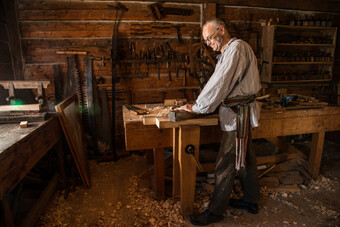Grade 4 & up
Social Studies
4.1 Alberta: A Sense of the Land
4.1.1 Value Alberta's Physical Geography and Natural Environment
Appreciate how Land sustaining community and quality of life
Demonstrate care and concern for environment through their choices and actions
Appreciate the environmental significance of national and provincial parks and protected areas in Alberta
4.2 The Stories, Histories and People of Alberta
4.2.1 Appreciate how an understanding of Alberta's history, peoples and stories contributes to their own sense of belonging and identity
Recognize how stories of people and events provide multiple perspectives on past and present events
Recognize oral traditions, narratives, and stories as valid sources of knowledge about the land, culture and history
Demonstrate respect for places and objects of historical significance
4.2.2 Assess, Critically, how the cultural and Linguistic heritage and diversity of Alberta has evolved over time
Which First Nations originally inhabited the different areas of the province??
What do the stories of Aboriginal peoples tell us about their beliefs regarding the relationship between people and the land?
4.S Skills and Processes
4.S.3 Develop Skills of Geographic Thinking
Use historical maps to make meaning of historical events and issues
5.1 Physical Geography of Canada
5.1.1 Value Canada's Physical Geography and Natural Environment
Appreciate how the land sustains communities and the diverse ways that people have of living with the land
Appreciate the influence of the natural environment on the growth and development of Canada
5.1.3 Analyze how people in Canada interact with the environment
In what ways do natural resources and the physical geography of a region determine the establishment of communities
How are natural resources used, exchanged and conserved in Canada
5.2 Histories and Stories of Ways of Life in Canada
5.2.1 Appreciate the complexity of identity in the Canadian context
Recognize how an understanding of Canadian history and the stories of its people contributes to their sense of identity
Acknowledge oral traditions, narratives, and stories as valid sources of knowledge about the land and diverse Aboriginal cultures and histories
Acknowledge British influence and presence in Canada
5.2.2 Examine, critically, the ways of life of Indigenous peoples in Canada
What do the stories of First Nations, Métis and Inuit peoples tell us about their beliefs regarding the relationship between people and the land?
5.2.4 Examine, critically, ways of life of the Fur Traders
How are the stories of the Métis people, their culture and heritage rooted in the fur trade?
How do stories about ways of life in fur trade forts reflect the British influence in Canada?
What were the main languages spoken by fur traders and their families in the fur trade forts?
6.S Skills and Processes
6.S.3 Develop Skills of Geographic Thinking
Construct and interpret various types of maps to broaden understanding of topics being studied
7.1 Toward Confederation
7.1.1 Appreciate the influence of diverse Indigenous, French, and British peoples on events leading to Confederation
7.1.2 Appreciate the challenges of coexistence among peoples
7.1.3 Compare and contrast diverse social and economic structures within the societies of Aboriginal, French, and British peoples in pre-Confederation Canada
What were the social and economic actors of European imperialism?
In what ways did European imperialism impact the social and economic structures of Aboriginal societies?
7.1.4 Assess, critically, the economic competition related to the control of the North American fur trade
How did the First Nations, French, British, and Métis peoples interact with each other as participants in the fur trade?
How did the fur trade contribute to the foundations of the economy in North
